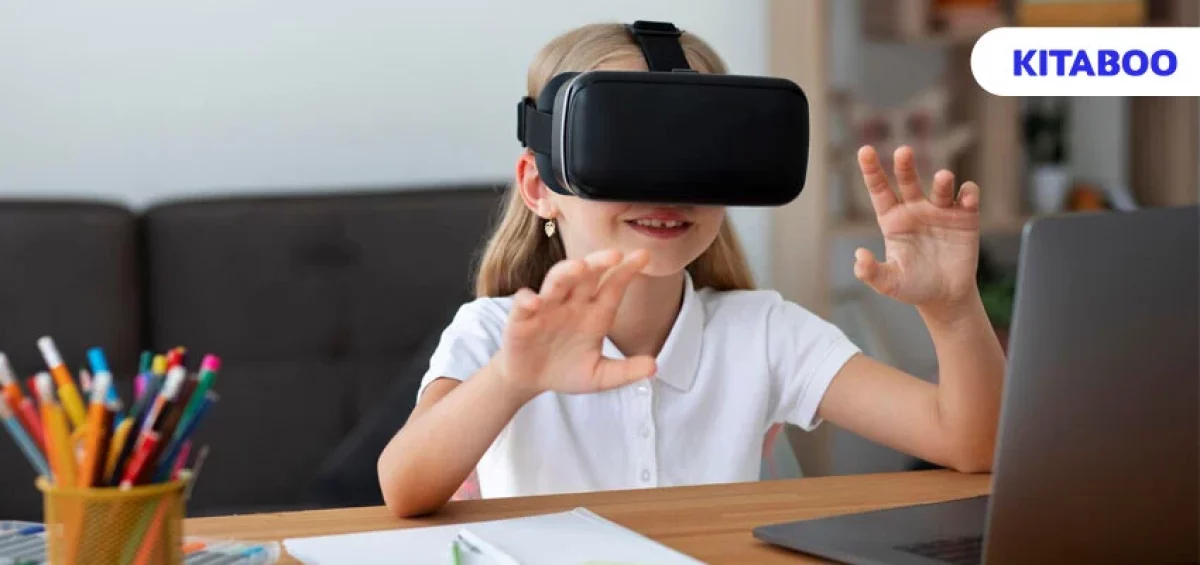Gamification is changing education for the better, and it’s not just a trend – it’s a smart move. It brings game design principles into education, turning boring stuff into interactive adventures. This way, it revolutionizes the traditional education model by incorporating elements of play and engagement.
With points, levels, challenges, and rewards, gamification makes learning fun and immersive. It also enables students to develop critical skills in a dynamic and interactive environment.
Especially in the K12 sector, gamification has gained popularity as a powerful tool for fostering student engagement and achievement.
In this post, we cover some specific aspects of how gamification is making a positive impact in the K-12 education sector.
Read on!
Table of Contents:
I. Understanding Gamification in Education
II. The Role of Gamification in Education
- Boosts Active Participation
- Offers Rewards for Encouragement
- Provides Quick Feedback
- Boosts Customized Learning
III. How to Implement Game-Based Elements for Student Engagement and Knowledge Retention?
- Add Interactive Elements
- Introduce Levels and Challenges
- Embrace a Storytelling Narrative
- Adopt Personalized Learning and Progress Tracking
IV. Future Trends of Gamification in Educational Content
V. Conclusion
Understanding Gamification in Education
Gamification in education is like adding a sprinkle of gaming magic to learning. It’s a clever idea that’s becoming super popular because it motivates and inspires learners in ways traditional methods might miss.
Think of gamification as turning learning materials into a game. Students aren’t just sitting back and listening; they’re active players in their learning journey. This change not only makes learning more interesting but also boosts critical thinking, problem-solving, and teamwork.
When it comes to the K12 sectors, educators can leverage digital textbook platforms like KITABOO to integrate gamification elements into their teaching strategies. With its interactive features, students can explore and learn at their own speed, giving teachers insights into how each student is doing.
The Role of Gamification in Education
When it comes to the K12 sector, gamification plays a crucial role in reshaping the educational landscape. It not only helps learners stay engaged but also contributes to their overall development.
Below are some additional points highlighting the role of gamification in the educational landscape:
Boosts Active Participation
When students actively take part in gamified learning, they remember things better. By getting involved and tackling challenges, they’re engaged and motivated to learn. This way, they become active participants in their own education, leading to a deeper understanding of the material.
Offers Rewards for Encouragement
Gamification uses rewards, like badges or certificates, to celebrate learning achievements. These rewards keep students going, making sure they remember what they’ve learned.
Provides Quick Feedback
Gamified learning gives students feedback right away, helping them understand and remember things on the spot. Quick feedback is like having a personal coach, boosting learning and memory.
Boosts Customized Learning
Gamification lets each student learn in their own way. Students are able to customize their learning pace, lesson difficulty, and even use assistive tools like text to speech if they need.
In this regard, leveraging digital textbook platforms like KITABOO can be particularly beneficial for customizing the learning experience. It not only provides a platform for gamified learning but also enhances the overall customization of the educational journey.
How to Implement Game-Based Elements for Student Engagement and Knowledge Retention?
To make learning more engaging and help students remember things better, editors can add game-style elements to educational content.
Here are some strategies that editorial directors can follow to implement game-based elements effectively for student engagement and knowledge retention:
Add Interactive Elements
Mix in quizzes, puzzles, and interactive simulations to challenge students and reinforce what they’ve learned.
Add creative tasks, like art projects or writing assignments, related to the lessons. Letting students show what they’ve learned in creative ways helps them remember it better. So, make sure to incorporate a variety of interactive elements and creativity boosters to enhance the overall learning experience.
Introduce Levels and Challenges
Break up lessons into levels or stages, each with new challenges. It’s like climbing a ladder – each step brings a new win and keeps students interested. Set up group activities or discussions to get students working together. Sharing ideas helps them learn from each other.
Additionally, consider introducing stress-free competitions. Use leaderboards or rewards for top performers to spark friendly competition. It keeps students excited and engaged in learning.
Embrace a Storytelling Narrative
Tell stories with the lessons to make them more engaging. Students get hooked on the story and remember the lesson better. The experience can be enhanced by using immersive technologies.
Introduce augmented or virtual reality for super cool learning experiences. It’s like taking a trip into the lesson, making it stick in their minds. This not only adds an element of excitement but also provides a multisensory experience that can significantly enhance student engagement and knowledge retention.
Adopt Personalized Learning and Progress Tracking
Use adaptive technologies to customize educational content to each student’s style. Customized learning is like a perfect fit – it’s comfortable and helps them remember more.
Reinforce this method with progress tracking. Use visual progress-tracking tools to show students how they’re doing. It’s a reminder that helps them focus on what needs work.
Future Trends of Gamification in Educational Content
The future is bright for advanced technologies in education. Here are some of the major trends and advancements expected in the future of gamification in educational content:
AR/VR
Looking ahead, the future of gamification in education involves integrating virtual reality (VR) and augmented reality (AR). These technologies offer immersive experiences, enabling students to explore subjects in new ways. With cloud-based digital publishing platforms, VR and AR integration allows for virtual field trips, simulations, and hands-on experiences.
Personalization
Personalized learning pathways are also on the horizon. Adaptive learning technologies facilitate the customization of educational content to individual needs and learning styles. This creates a more personalized learning experience, ensuring students get the right content at the right level and pace.
Collaboration
Social and collaborative gamification is another future trend. Various platforms provide multiplayer features that enable students to collaborate, engage in group projects, and participate in discussions. This fosters teamwork, communication, and problem-solving skills while enhancing engagement and motivation.
When it comes to the K12 sector, collaboration becomes even more important. It enables students to develop not only academic knowledge but also essential social and interpersonal skills.
Analytics
Data analytics and personalized feedback will play a crucial role. Digital publishing platforms provide insights into each student’s progress, allowing teachers to offer targeted support. This data-driven approach identifies learning gaps and helps educators adapt instructional strategies to individual needs.
Conclusion
Digital learning platforms, through their interactive features and immersive experiences, provide a dynamic and engaging learning environment. Incorporating game-based elements helps boost student engagement, enhances knowledge retention, and prepares students for success in the digital age.
In this context, note that KITABOO turns traditional textbooks into interactive adventures, using points, levels, challenges, and rewards to keep students actively engaged. This approach not only makes education enjoyable but also hones critical thinking, problem-solving, and collaboration skills.
For educators, KITABOO offers valuable insights into each student’s progress, allowing for personalized instruction and targeted support. This way, it creates a more adaptive and effective learning experience tailored to individual student needs.
Write to us at KITABOO@hurix.com for more info!
Discover How An Ebook Conversion, Publishing & Distribution Platform Can Help You
Kitaboo is a cloud-based content platform to create-publish & securely distribute interactive mobile-ready ebooks.
You May Also Like







